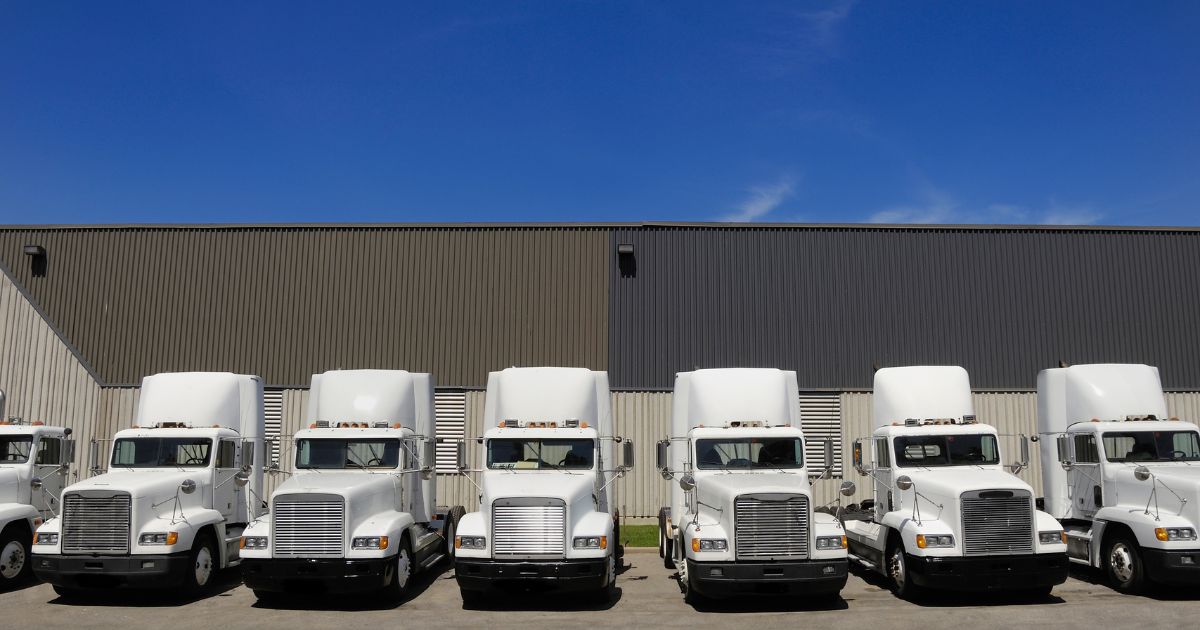Recruit and Retain: How Chief Carriers is Addressing the Truck Driver Shortage
The U.S. is short tens of thousands of truck drivers, a deficit that threatens the stability of the entire national economy. This truck driver shortage is a long-standing structural problem in the trucking industry, characterized by a persistent gap between the number of available drivers and the demand for freight transportation. It’s not merely a cyclical issue but a systemic challenge rooted in demographics, work-life balance, and industry-wide recruitment and retention issues.
At Chief Carriers, we believe the solution lies in a deliberate, driver-centric approach. As an award-winning industry leader, we’ve developed a model that directly addresses the root causes of this shortage. We’ll explore the causes, detail the far-reaching impact, and present a proven framework of solutions.

What’s Driving the Shortage? The Top 3 Factors
The truck driver shortage is often misunderstood as a simple lack of people. The reality is far more complex, driven by a combination of long-standing systemic issues. Here are the top three factors contributing to the problem.
Aging Workforce & Generational Gap
The average age of a U.S. truck driver is in the mid-50s. The industry has struggled to attract and retain younger talent, resulting in a significant demographic gap. As veteran drivers retire, the industry is not recruiting enough new drivers to replace them.
High Turnover Rates
The “revolving door” problem is a major culprit. Many carriers experience high turnover, often due to poor working conditions, limited home time, and a lack of a supportive company culture. This constant churn means that even when new drivers enter the workforce, they often do not stay long.

To provide an understanding of the magnitude of churn in the trucking industry, the following table contains the driver turnover rates reported for 2024.
RELATED: The Impact of Driver Turnover: Why Truck Driver Retention Matters
Barriers to Entry
Becoming a professional driver requires an investment. The cost of obtaining a commercial driver’s license (CDL) and the long hours and time away from home can be significant barriers for recruits. This makes it challenging for the industry to consistently attract a new pipeline of talent.
This domestic truck driver shortage also has broader implications for global trade. With fewer drivers available to move goods from ports to distribution centers, imports and exports can be stalled, disrupting international commerce and affecting economic stability on a larger scale.

The Ripple Effect: How the Driver Shortage Impacts Everyone
The truck driver shortage doesn’t just affect trucking companies; its impact reverberates throughout the entire U.S. economy, affecting the supply chain from top to bottom.
Freight
The most immediate consequence is on the movement of freight. Fewer available drivers lead to delayed shipments and higher transportation costs. These higher costs are often passed on to consumers, contributing to inflation and increasing the cost of everyday goods.

Logistics
This disruption extends to every stage of supply chain logistics. From the transport of raw materials to manufacturing plants to the delivery of finished products to retail stores, every link in the chain is strained.
A shortage of drivers to transport components could delay the manufacturing process, slowing production and ultimately affecting the availability of goods on store shelves.
Customer Experience
The challenge is particularly acute for last-mile delivery, the final stage of a product’s journey to the consumer. As e-commerce and fast delivery expectations grow, the demand for drivers for this critical leg of the supply chain has surged. The truck driver shortage makes it difficult to meet this demand, leading to service delays and dissatisfied customers.

Chief Carriers’ Perspective: It’s a Shortage of Desire, Not Licenses
A common misconception is that the shortage is about a lack of people. But what if that’s not the problem?
“I’ve never bought into the driver shortage narrative,” our General Manager, Andrew Winkler, shares. “We don’t have too few drivers; we have too few drivers willing to put up with a poor trucking culture. Treat people right and they show up. Treat them great and they stick.”
The reality is that there are enough CDL holders nationwide to meet freight demand. The true systemic challenge is that the conventional industry model—characterized by limited home time, poor culture, and low support—has actively pushed qualified drivers out of trucking and into other blue-collar sectors.
Solving the problem requires a shift from a recruitment-only focus to a robust recruitment and retention model.

A Framework for Recruitment and Retention
At Chief Carriers, we have proven that the truck driver shortage is solvable. Our success is a result of a deliberate, driver-centric strategy that positions our company not just as an employer but as a partner in our drivers’ careers.
Our internal data shows our driver retention rate is higher than the industry average. This is not an accident; it’s the result of a deliberate, driver-first strategy. Our approach focuses on three core pillars that create a sustainable, long-term solution.
A Driver-Centric Culture: The Cornerstone of Our Solution.
- Work-Life Balance: Contrary to the industry norm of long, unpredictable hauls, we prioritize getting drivers home more often. This commitment to predictable schedules and quality time with family is a core component of our retention strategy.
- Competitive Compensation: We go beyond simple per-mile pay rates. Our total compensation packages include robust benefits, performance incentives, and bonuses. We ensure our drivers are among the highest-paid in the industry, reflecting the value they bring to our company and the economy.
- Premium Equipment: Our fleet is comprised of modern, well-maintained trucks equipped with the latest safety and comfort features. This not only attracts drivers but also reduces downtime, improves efficiency, and signals our commitment to their safety and comfort.
RELATED: How Transparent Company Culture Fuels Truck Driver Retention

The Old Way vs. The Chief Carriers Way: A Direct Comparison
The following table highlights the difference between the conventional trucking industry model and our proven approach.
The takeaway is clear: the solution to the truck driver shortage isn’t about finding more people; it’s about creating a workplace where drivers want to stay. Investing in drivers is a long-term investment in the entire supply chain.
RELATED: Chief Carriers Named Among 2025 List of Best Fleets to Drive For

Top Questions About the Truck Driver Shortage
What is a commercial driver’s license (CDL), and is it hard to get?
A commercial driver’s license (CDL) is a professional license required to operate large commercial vehicles. While the training and testing are rigorous, they are achievable with proper instruction and dedication.
How does the driver shortage affect consumers?
The shortage can lead to shipping delays and higher prices for goods, as businesses must pay more for freight. This impacts the cost and availability of a wide range of products.
Is the government taking any action to address the driver shortage?
The government has introduced various initiatives to address the shortage, including the Drive Safe Act, which aims to lower the age requirement for interstate commerce. However, many industry leaders believe these efforts must be supported by private-sector solutions focused on recruitment and retention.
What makes Chief Carriers a “Best Fleet to Drive For?”
Our commitment to driver well-being, competitive pay, superior equipment, and a healthy work-life balance is what makes our fleet so attractive. Our dedication is regularly recognized by our drivers and through industry awards.
RELATED: Chief Carriers Honored as a 2025 TCA Elite Fleet Certified Carrier

Mitigating the Trucking Industry Driver Shortage Impact
The truck driver shortage is a complex problem with deep roots in the trucking industry, but it is not insurmountable. By shifting the focus from simply recruiting new drivers to actively retaining the ones we already have, the industry can build a stable, long-term workforce.
At Chief Carriers, our business model not only benefits our company but also provides our drivers with a better career and our customers with a more reliable supply chain. We’ll continue to champion a driver-first approach, setting a new standard for a healthier and more prosperous industry.
If you’re a driver looking for a new opportunity, we invite you to apply with us today.

